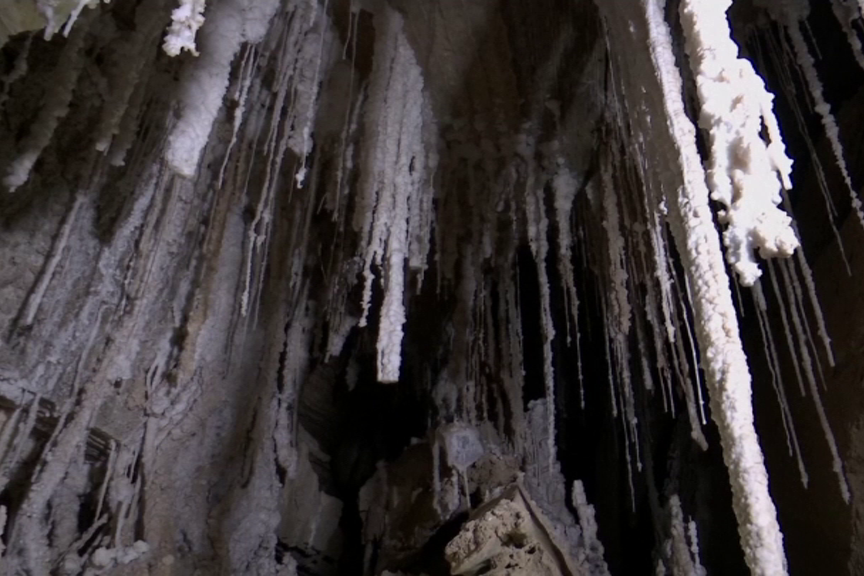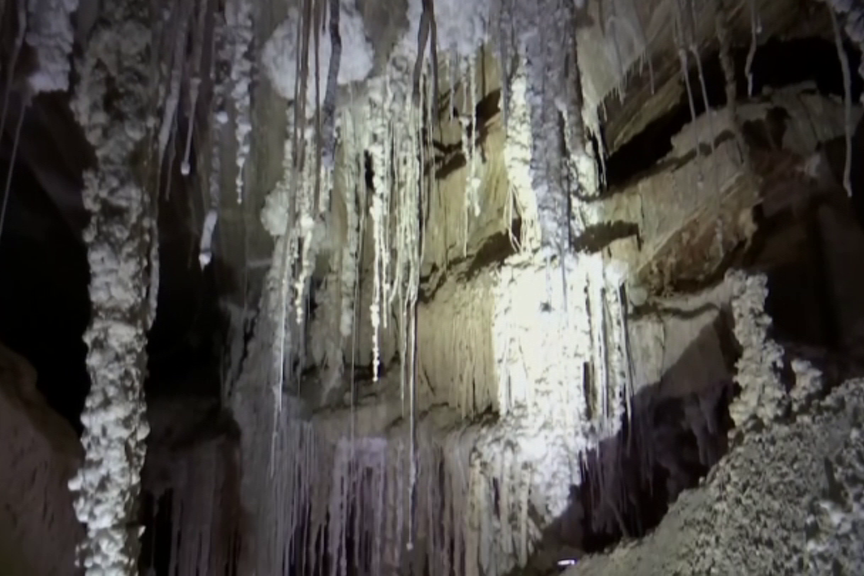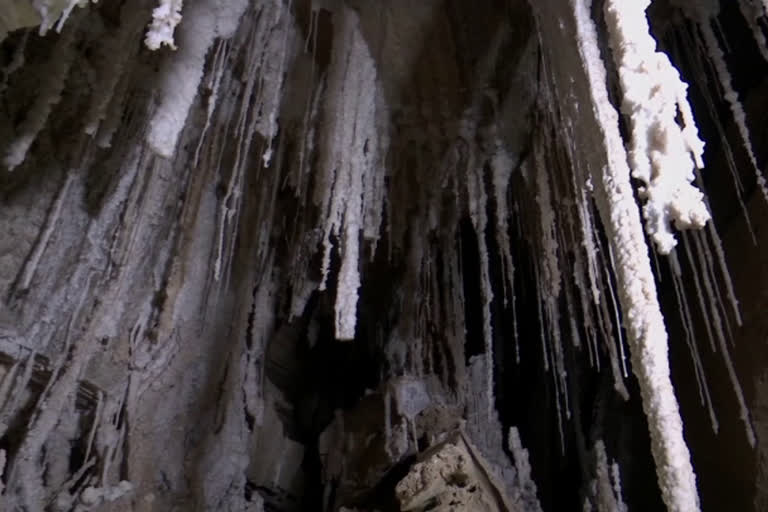Mount Sodom (Israel): A full moon over Mount Sodom, the home of Malham cave.
After descending the mighty drop at the cave's shaft entrance you discover a network of twisting passageways, carved by seasonal rains sculpting the mountain.
A recently completed survey of the cave conducted by the Hebrew University of Jerusalem and a collection of volunteers determined that the Malham Cave is far larger than previously believed.
Thanks to new measuring techniques geologists can now confirm that the cave measures over 10 kilometres (6 miles) in length.
The previous record-holder, Iran's roughly four-mile-long Namakdan Cave, snagged the crown for longest salt cave from Malham after an extensive study by Czech and Iranian scientists in 2006.
The new survey of the Malham Cave not only puts it on top again, but by a sizeable margin.

Boaz Langford, from the University of Jerusalemwas one of the researchers who spearheaded the expedition and plans to publish the complete map of the cave in the coming months.
"We decided to come back to the cave to re-measure it to see the actual length of the cave because it's the measurements done during the '80s with different method and tools. And now after we finish, we realise it's not just the longer again it's the only salt cave in the world longer than 10 km. It's unbelievable it's like to change the magnitude from several kilometres to more than 10. So, now we can say that we are inside the longest salt cave in the world."Langford says.
As the explorers crawl and climb through the winding pathways inside the cave they come to an opening that it filled with stalactites and stalagmites.
Cave explorer Ephraim Cohen explains why they dubbed this part of the cave 'the wedding hall',
"We gave this hall its name because when we crawled in a cave and got to this chamber this hall all the stalagmites and stalactites the beauty, their colour, they're really white, they're shiny. They're amazing. All of that together gave us the inspiration to give this hall the name the 'wedding hall' because it's so impressive when you first approach it the first time you enter this place".

Salt caves themselves are unusual and rare geological features. Because it is highly water soluble, large salt deposits do not normally survive long on the surface. Only a handful of salt caves are larger than half-mile long. Salt caves tend to only exist in highly arid regions, like the area around the Dead Sea.
Hebrew University geologist Amos Frumkin says the cave itself is quite unique.
"The upper levels are the oldest and we have dated them to 7000 years old which is not very old in terms of caves in the world. It's very young. Actually, it's of Holocene age. The reason why it's so young is because it's made of salt. Limestone caves are much slower to form and they'll usually much older. But this one is developing very fast so it's one of the youngest caves in the world."
Mount Sodom is a mountain of solid salt at the southern extreme of the Dead Sea, the lowest place on Earth.
On the mountainside above, Langford, and his colleagues have identified at least 19 openings where seasonal floods have dissolved Mount Sodom's rock salt to form the cave.
The Dead Sea and Mount Sodom were formed by tectonic activity, the shifting of the Earth's plates at the northern end of the 4,000-mile-long Afro-Arabian Rift Valley.
Over millions of years, successive flooding of the deep depression lay down thick layers of salt.
The results will published with the European Speleological Federation.
Although the scientists have completed their study, there may still be more of the cave undiscovered.
Also read- Metalised balloons float next to hanging cities as Art Basel comes alive



